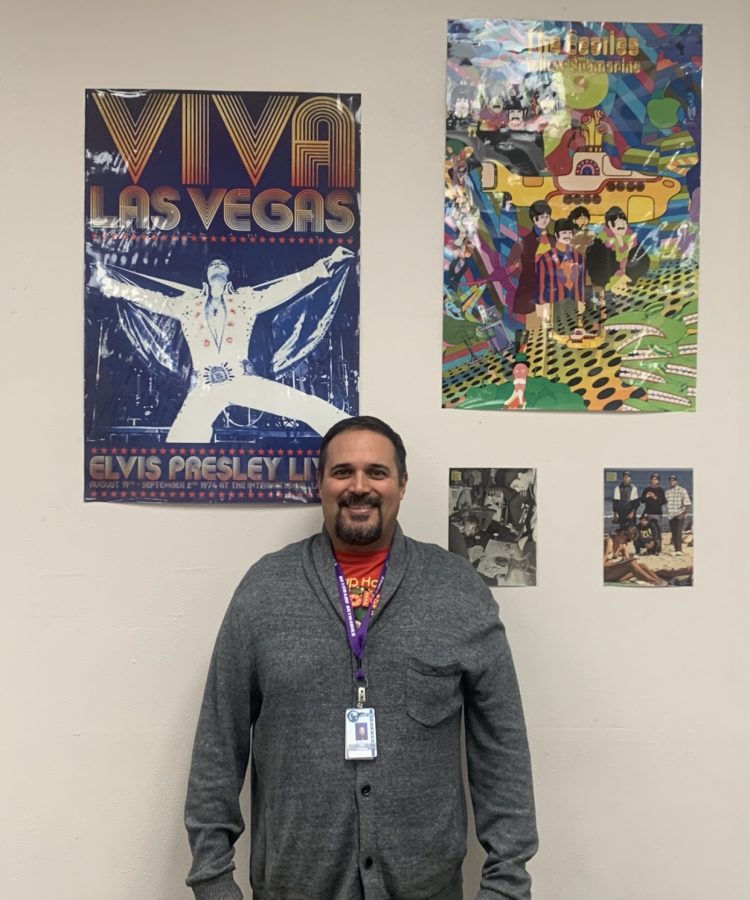Charlize Santos
History of popular music isn’t ‘just music’
For some, the highlight of their school day is leaving campus after the final bell rings for dismissal. However, mine is just before: seventh period, or the history of pop music with Nick Pavlides.
Posters featuring the greatest artists in music history such as The Beatles, Pink Floyd, The Rolling Stones, and The Ramones greet students as soon as they step into room 800. Even a life-size poster cutout of the king of rock ‘n’ roll himself, Elvis Presley, can be found pinned on the wall watching over students like a god.
In class, students watch music videos and are asked what the song is about, what they believe makes the song popular and unique, and what their impressions are of the video. Entire genres as well as eras of popular music are covered, enabling students to gain a deeper appreciation and understanding of music.
“I just like showing students music that they probably have never heard before and having them find artists that they like,” Pavlides said. “A lot of students tell me they add stuff to their Spotify playlists. That’s the part I like the most.”
Chapters are taught in chronological order according to each significant era of popular music. Assignments include listening to a few songs from a significant artist or era of music and drawing posters related to them. Drawing posters based on music happens to be my favorite part as it sparks creativity in a subject that I love and typically isn’t taught in most schools.
Movies are also shown in class along with assigned questions to keep students engaged and informed. A few that have been shown so far are, “Cadillac Records,” “Yellow Submarine,” “Pink Floyd – The Wall,” and my personal favorite, “Elvis.”
It’s more than just music, too. By learning about the history of popular music, students are also taught the influence social and political issues have on music, as well as how much of an impact music can make on society.
For example, the beginning of the rock ‘n’ roll era in the ’50s sparked major backlash in some areas for its rebellious attitude and suggestive lyrics. Early rock ‘n’ roll artists also broke down barriers of racism and segregation in the South. Artists like Little Richard, Elvis and Chuck Berry brought black music to a white audience, changing the relationship between the two racial groups in America forever.
Another example of political influence on music was the psychedelic era. Beginning in the early ’60s and continuing throughout the ’70s, the psychedelic era came to life in response to the Vietnam War, which many people were against. In such a period of death, destruction and despair, an influx of legendary artists used their platform to urge for peace and love through music, thus empowering the Hippie Movement.
As people, our identities are shaped around popular culture, and music is a huge part of that. So next time you press shuffle on your Spotify playlist, remember that music isn’t “just music.” It’s a universal language that has the ability to bring communities together, educate, empower and overall spark joy. Anything holding that amount of power and positive influence should be shared with everyone.

